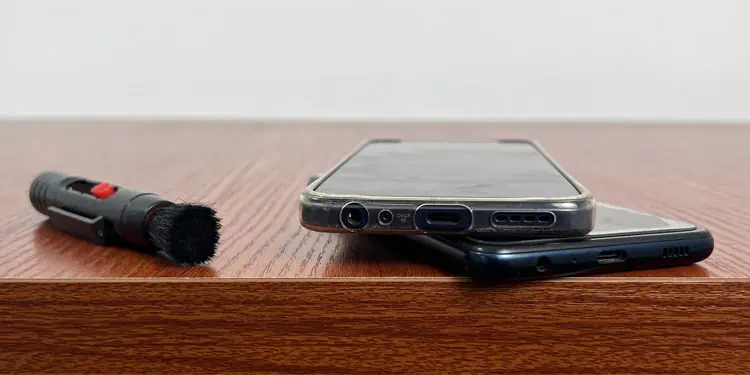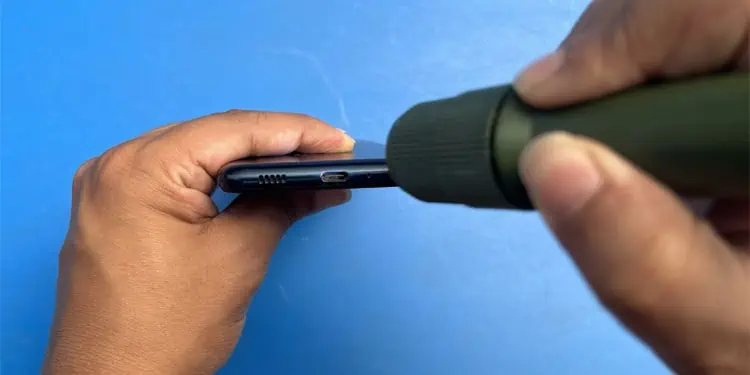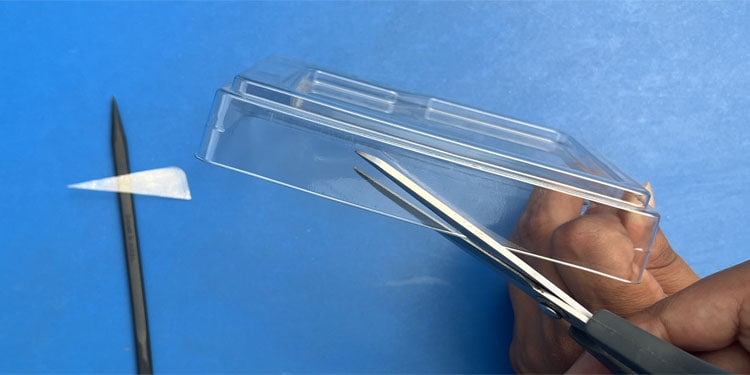Nowadays, most mobile phones and laptops come with USB-C ports. All types of ports, including this one will get clogged with dust or gunk over time.
In such cases, USB-C cables will often come loose from the port and may fall out at times. You may also not be able to fast charge your mobile phones due to the loose connection. You need to clean the port whenever you encounter such issues.
However, since the port is very narrow with a small opening, usual methods to clean other ports may not be applicable here. So here’s a comprehensive guide on the cleaning process.
Step 1: Get Everything Ready
You will need some specific equipment to clean the port depending on how grimy or dirty it is. I have also included a list of things you need to avoid during the cleaning process.
Equipment You Need
- Flashlight: It’s always best to look inside the port you are cleaning with the help of a flashlight to know where you need to clean and to keep track of your progress.

- Compressed Air or Aerosol Spray: Compressed air cans are the best to remove dust and dirt from electronic parts, especially USB-C ports. Also, make sure the static pressure of the can does not go beyond 30 psi for device safety.
If you don’t have air cans, you can use a silicone blower, an air duster, or even a vacuum cleaner. But they may not provide enough pressure to clean the port.
- Soft Bristle ESD Brush (Optional): You can also use a soft-bristle ESD brush or a small painting brush if you don’t have any canned or compressed air. However, it is not as effective for USB-C ports as it may not be able to get inside the port completely.

- Thin Plastic Picks (If there is Sticky Lint or Gunk): Compressed air can’t remove lint or gunk that has stuck inside the ports. You will need to gently scrape them away with a plastic pick-shaped object that won’t damage the pins or break off.
You can use a small plastic toothpick or cut a pointed part out from a plastic card and use it instead. Make sure the pick is not so flexible that it will bend while trying to scrape the gunk.
You can also buy and use dedicated USB-C cleaning tools that include similar picks. - Contact Cleaner Solvents (If There is Sticky Lint or Gunk): You may not be able to scrape away some gunks like asphalt residue. You can try using a volatile solvent like DeoxIT or WD-40 electrical/electronics cleaner in such cases. These will dissolve the gunk and then evaporate quickly without leaving much residue.
Don’t use any stronger solvents as they can dissolve the plastic parts in and around the port.
Don’ts of Cleaning USB-C Port
- Don’t Use Metal Objects: USB-C ports have a very small opening, so using any metal object, even a precision tweezer can damage the pins if not done by a professional.
- Avoid Wooden Toothpicks: Wooden toothpicks can break off and get stuck in the port. So, it’s best not to use it anywhere near USB-C ports.
- Don’t Clean with Q-tips or Earbuds: Most Q-tips or earbuds won’t fit inside the USB Type-C port. Additionally, even those that do fit can leave behind lint in the small opening.
- Never Use Non-volatile Liquid: As with any electrical/electronic equipment, you never use a non-volatile liquid like water, bleach, ammonia, etc to clean the USB-C port. These liquids don’t dry off quickly and can corrode the metal pins. They can even cause damage due to short circuits if you power up the device before they dry off.
- Avoid Hard-bristle Brushes: Hard bristle brushes can scratch the pins and the pin housing. The bristles may even break off and get stuck in the port.
- Don’t Blow Air from Your Mouth: The air you blow may contain water vapor that can damage the port like other non-volatile liquids. Also, I don’t recommend blowing with your mouth close to any dusty surface as the dust can get inside your nose or mouth.
Step 2: Shutdown the Device
Before you begin with the cleaning, I recommend turning off the mobile device or the computer. USB-C ports carry some current and cleaning with solvents can damage the ports due to short circuit issues. If the device has a removable battery, it’s better to remove those as well.
Also, if you are cleaning the USB-C port on a computer, power drain the computer by pressing the power button for a few seconds and remove any external connections as well.
Step 3: Clean the Port
Now is the time for the actual cleaning process. Using compressed air is the best way to clean the USB Type-C port. And if it doesn’t help clean everything, you can use a plastic pick or even a volatile solvent.
Spray Compressed Air
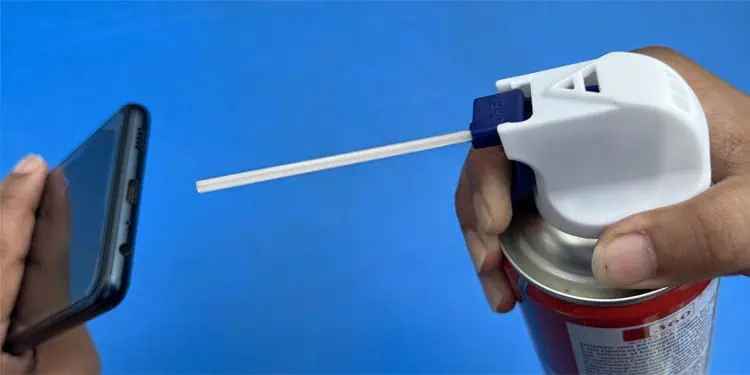
The first thing you need to do is spray compressed air into the USB Type-C port regardless of the amount of clogged dust or grime.
- Make sure to spray the air in short bursts using different angles to get as much dust out as possible.
- If you are using an air can, don’t shake it before cleaning and don’t invert it while cleaning as you’ll spray the liquid instead.
- Also, use a flashlight to look inside the port to check if it becomes clean.
Remove Lint With Plastic Pick
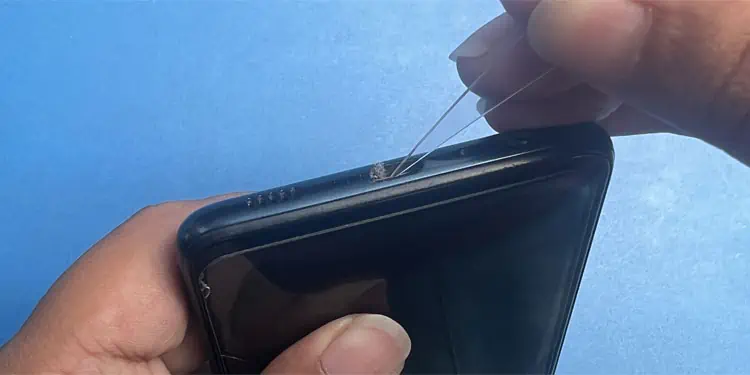
If there is lint or gunk stuck inside the port, you will need a plastic pick or a similar object to remove them carefully.
- Gently scrape away the gunk or pull out the lint in smaller chunks without damaging the pins.
- Keep looking inside the port with the help of a flashlight during the process to keep track of the remaining lint/gunk.
- After that, spray with compressed air again to clean the residual dirt that remains after scraping everything else.
Use Some Solvents
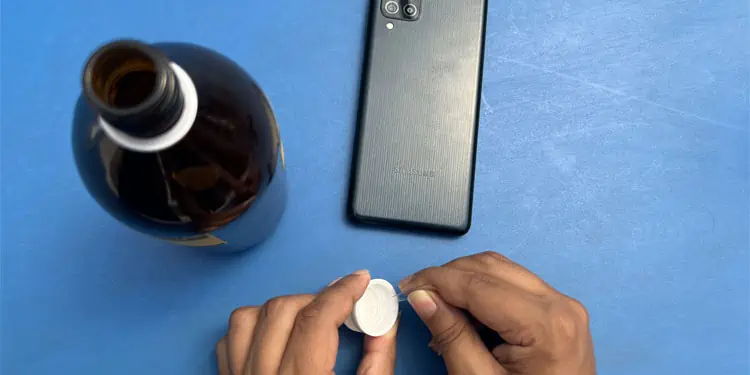
You can try using a contact cleaner like DeoxIT or WD-40 electronics cleaner if and only if there is some gunk you can’t scrape away.
- Don’t use the solvent liquid or spray on the port directly. Some glue will be holding together the USB port in place and the solvent can corrode those.
- Instead, spray it on the narrow plastic pick or dip the pick into it and use it to clean the gunk.
- Let it dry off before powering up the device.
Step 4: Test the Port
After cleaning the port, try checking if it works. You can power up your device and then connect a charger, data cable or any device into the port to test it out.
If it still shows some issues, It’s best to take the device to a support center for servicing or repairs.
Step 5: Keep Port Covered (Optional)
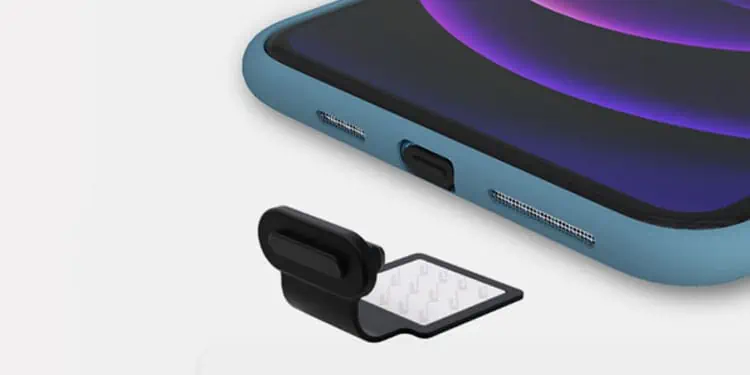
If you work or stay in a place where the USB-C port on your devices is likely to get dirty frequently, keeping the port covered is a good idea. You can buy USB-C plugs and use them or you can just stick a tape around the port.
I recommend the plug though as removing the tape may take more time and even leave behind its glue on the device.
